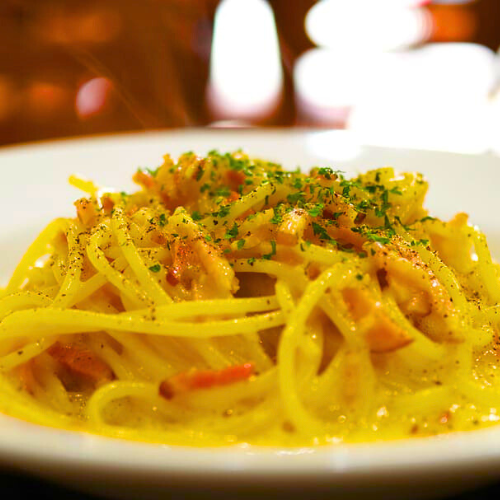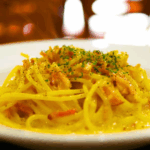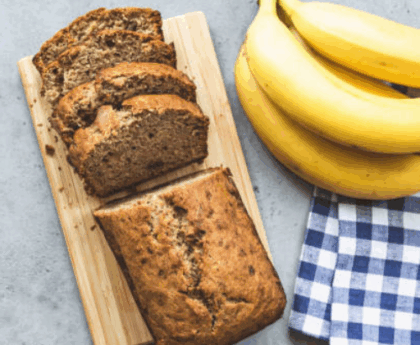What is Traditional Carbonara Made Of? The Authentic Recipe Explained
Introduction
If you’ve ever wondered “What is traditional carbonara made of?” you’re not alone. Spaghetti alla Carbonara is one of Italy’s most beloved pasta dishes, yet it is often misunderstood and misrepresented outside of Italy. Traditional carbonara is a simple, rustic Roman recipe made with just a handful of ingredients, yet when prepared correctly, it becomes a creamy, luxurious pasta dish that captures the essence of Italian culinary philosophy: simplicity, quality, and technique.
In this comprehensive guide, we will explore what authentic carbonara is made of, the history behind it, common mistakes to avoid, and how to prepare it at home like a true Roman chef.
A Brief History of Carbonara
Understanding what traditional carbonara is made of requires an exploration of its origins. Spaghetti alla Carbonara is often associated with Rome and the Lazio region of Italy. Its exact origins are debated by food historians, but it is generally agreed that the dish emerged in the mid-20th century, possibly as a response to the availability of American ingredients like bacon and powdered eggs during World War II.
However, the dish quickly evolved into a quintessentially Italian creation, firmly rooted in local ingredients and culinary traditions. Traditional carbonara reflects the rustic, peasant roots of Roman cuisine, often referred to as “cucina povera” — the food of the poor, which relied on simple, accessible ingredients with bold flavors.
The Core Ingredients of Traditional Carbonara
So, what is traditional carbonara made of? At its most authentic, traditional carbonara consists of five essential ingredients:
- Guanciale (Cured Pork Jowl)
- Pecorino Romano Cheese
- Eggs (Typically Egg Yolks)
- Black Pepper
- Spaghetti (or sometimes rigatoni or bucatini)
1. Guanciale: The Heart of Carbonara
Guanciale is a type of Italian cured meat made from pork cheek or jowl. It is prized for its rich, fatty texture and intense, savory flavor. Unlike pancetta or bacon, guanciale has a higher fat content, which renders beautifully when cooked, coating the pasta in a luscious, silky sauce.
Why Guanciale is Essential:
- Provides authentic Roman flavor.
- Renders fat that forms the base of the sauce.
- Offers a unique texture: crisp on the outside, tender inside.
Common Mistake: Substituting guanciale with bacon or pancetta changes the flavor and authenticity of the dish. While pancetta is acceptable in a pinch, it is not traditional.
2. Pecorino Romano: The Salty Kick
Pecorino Romano is a hard, salty cheese made from sheep’s milk. This cheese is integral to Roman pasta dishes like carbonara, cacio e pepe, and amatriciana.
Why Pecorino Romano is Essential:
- Offers a sharp, salty flavor that balances the richness of the guanciale and eggs.
- Grates finely, melting seamlessly into the sauce.
- Anchors the dish with a distinctly Roman taste.
Common Mistake: Using Parmigiano-Reggiano or Grana Padano. While delicious, these cow’s milk cheeses are milder and not traditional to carbonara.
3. Eggs: The Creamy Element
Contrary to many non-Italian adaptations, traditional carbonara contains no cream. The creamy texture comes exclusively from the emulsion of egg yolks, pasta water, and rendered guanciale fat.
Why Eggs Are Essential:
- Provide the silky, glossy texture.
- Add richness and depth of flavor.
- Emulsify with cheese and fat to create the signature sauce.
Common Mistake: Adding cream or butter. These ingredients are not part of the traditional recipe and mask the nuanced flavors of the authentic dish.
4. Black Pepper: The Spice Element
Freshly ground black pepper is a key seasoning in carbonara. It adds a necessary sharpness and subtle heat that complements the richness of the other ingredients.
Why Black Pepper is Essential:
- Provides aromatic complexity.
- Cuts through the fat and cheese.
- Ties the flavors together harmoniously.
Common Mistake: Using pre-ground pepper. Always use freshly cracked pepper for the best flavor.
5. Spaghetti: The Pasta of Choice
While there are variations with rigatoni or bucatini, spaghetti is the most common pasta used in traditional carbonara.
Why Spaghetti is Essential:
- Provides optimal surface area for the sauce to cling.
- Cooks evenly and holds its shape.
- Traditional to Roman pasta dishes.
Common Mistake: Overcooking pasta. Carbonara requires perfectly al dente pasta for the best texture and sauce adherence.
What Traditional Carbonara Does Not Contain
To further clarify what traditional carbonara is made of, it’s equally important to understand what it does not include:
❌ No cream
❌ No garlic
❌ No onions
❌ No butter
❌ No olive oil
❌ No parsley
These additions are common in non-Italian versions but are not part of the authentic Roman preparation.
How to Make Traditional Carbonara: Step-by-Step
Ingredients (Serves 4)
- 400g spaghetti
- 150g guanciale, cut into small strips
- 4 large egg yolks
- 100g Pecorino Romano, finely grated
- Freshly ground black pepper
- Salt for pasta water
Instructions
Step 1: Prepare the Ingredients
Cut guanciale into small strips. Grate Pecorino Romano. Separate the egg yolks.
Step 2: Cook the Guanciale
Place the guanciale in a cold pan and cook over medium heat until the fat renders and the meat is crispy. Remove from heat and set aside.
Step 3: Boil the Pasta
Cook spaghetti in well-salted water until just shy of al dente. Reserve about one cup of pasta water.
Step 4: Prepare the Sauce
In a large bowl, whisk the egg yolks with most of the Pecorino Romano and a generous amount of freshly ground black pepper.
Step 5: Combine Everything
Quickly toss the hot, drained pasta with the guanciale and its rendered fat. Off the heat, mix in the egg and cheese mixture, stirring vigorously to emulsify. Add reserved pasta water as needed to create a smooth, creamy sauce.
Step 6: Serve
Top with additional Pecorino Romano and more cracked black pepper. Serve immediately.
Expert Tips for Perfect Carbonara
- Temperature Control: Never add eggs over direct heat to avoid scrambling.
- Pasta Water: This starchy liquid helps emulsify the sauce to achieve the perfect consistency.
- Timing: Work quickly once the pasta is cooked to ensure the sauce remains smooth.
Variations of Carbonara Around the World
While traditionalists insist on the original five ingredients, many variations exist globally:
- American-Style Carbonara: Often includes cream, garlic, and bacon.
- Vegetarian Carbonara: Uses smoked cheese or mushrooms instead of guanciale.
- Modern Twists: Chefs experiment with different pasta shapes, additional spices, or even truffle shavings.
However, these are interpretations and should not be confused with traditional carbonara.
Why Authenticity Matters
The question of “what is traditional carbonara made of?” isn’t just about ingredients; it’s about respecting a cultural and culinary heritage. Authentic carbonara showcases:
- Simplicity
- Quality ingredients
- Skillful technique
By adhering to the traditional recipe, you connect with centuries of Italian food culture and culinary excellence.
Nutritional Profile of Traditional Carbonara
Traditional carbonara, while rich, is relatively balanced when made with high-quality ingredients in proper portions.
- Calories: ~500-700 per serving
- Protein: From eggs and guanciale
- Fats: Mostly from guanciale and egg yolks
- Carbohydrates: Primarily from pasta
It is indulgent but not excessive when enjoyed in moderation.
Frequently Asked Questions (FAQ)
What is traditional carbonara made of?
Traditional carbonara is made of guanciale, Pecorino Romano cheese, egg yolks, black pepper, and spaghetti. It does not contain cream, garlic, or onions.
Is it okay to use bacon instead of guanciale?
While bacon can be used in a pinch, it is not traditional. Guanciale provides a distinct flavor and texture that is essential to authentic Roman carbonara.
Can I add cream to carbonara?
No. Authentic carbonara does not include cream. The creaminess comes from the emulsion of egg yolks, pasta water, and guanciale fat.
What kind of cheese is used in traditional carbonara?
Pecorino Romano, a hard, salty sheep’s milk cheese, is the traditional choice. It provides the distinctive sharp and savory flavor essential to carbonara.
Can I make carbonara with whole eggs?
Traditional recipes often use only egg yolks for richness and creaminess. Some variations incorporate a whole egg for a lighter sauce, but yolks-only is considered more authentic.
What pasta is traditionally used in carbonara?
Spaghetti is the most common pasta for carbonara, but rigatoni and bucatini are also popular in Rome.
How do you avoid scrambling the eggs in carbonara?
Remove the pan from heat before adding the egg mixture. Toss the hot pasta quickly with the eggs off the heat to create a smooth, velvety sauce.
Is carbonara safe to eat with raw eggs?
The residual heat from the pasta cooks the eggs gently, reducing risk. However, for safety, always use fresh, high-quality eggs.
Is carbonara considered healthy?
Carbonara is rich and indulgent but can be part of a balanced diet when consumed in moderation. Using quality ingredients and controlling portion sizes helps keep it reasonable.
Where did carbonara originate?
Carbonara originated in Rome, Italy, likely in the mid-20th century. Its name possibly derives from “carbonari,” or coal workers, though the exact etymology is debated.
Conclusion: Embrace the Authentic Carbonara
Now that you know what traditional carbonara is made of, you can appreciate the elegance and simplicity of this classic Roman dish. With just five essential ingredients — guanciale, Pecorino Romano, egg yolks, black pepper, and spaghetti — you can recreate a timeless recipe that embodies the heart of Italian cuisine.
If you’re eager to experience authentic carbonara, try sourcing real guanciale and Pecorino Romano from a local Italian market. Your efforts will be rewarded with a dish that is more than a meal; it’s a cultural experience.
Related Posts You Might Like
- The History of Pasta alla Gricia: The Predecessor of Carbonara
- How to Choose the Best Pecorino Romano for Italian Pasta Dishes
- Guanciale vs Pancetta: What’s the Difference?
Meta Title: What is Traditional Carbonara Made Of? Authentic Roman Recipe Explained
Meta Description: Discover what traditional carbonara is made of and how to prepare it authentically with just five essential ingredients: guanciale, Pecorino Romano, egg yolks, black pepper, and pasta.




